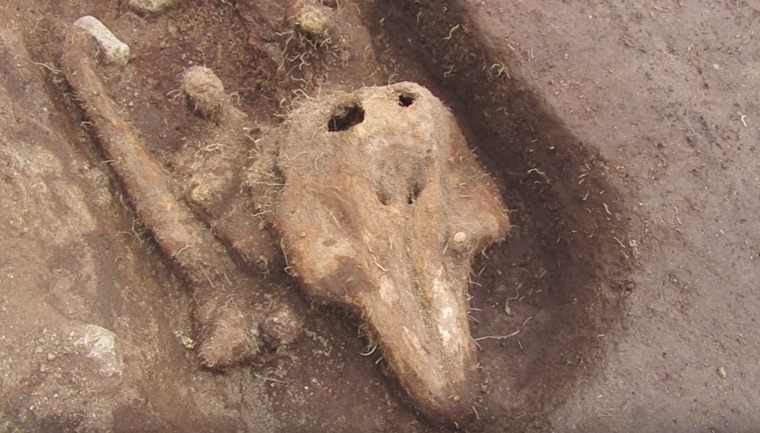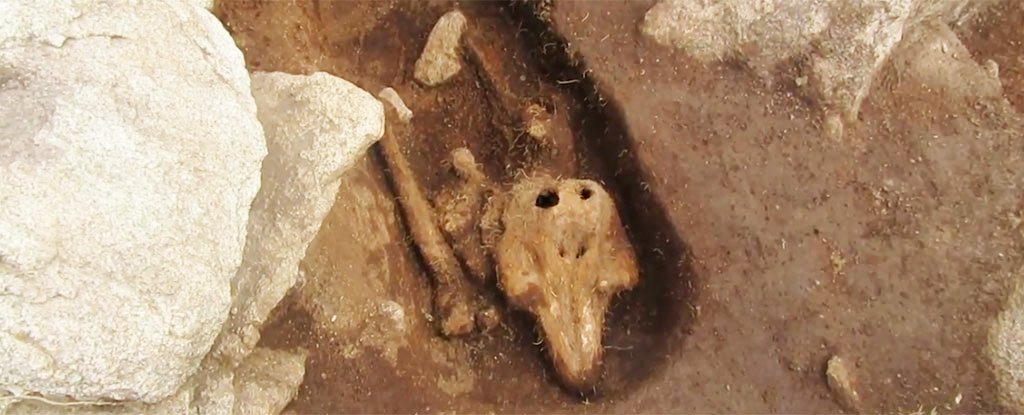In the field of archaeology, unexpected discoveries often hold the potential to unravel intriguing mysteries from the past. Such is the case with a remarkable find made by researchers on the small island of Chapelle Dom Hue off the coast of Guernsey in 2017. During a routine three-week dig, archaeologists stumbled upon a carefully constructed grave containing the ancient remains of a medieval porpoise, sparking a wave of intrigue and speculation.
Archaeologists Find Something Truly Bizarre in an Isolated Medieval Graveyard

In a remarkable archaeological discovery, researchers conducting a three-week dig in the English Channel stumbled upon a carefully constructed grave containing an unexpected inhabitant – the ancient remains of a medieval porpoise.
The discovery, made on the small island of Chapelle Dom Hue off the coast of Guernsey in September 2017, has left archaeologists puzzled and intrigued. Rather than the human remains they had expected to find, the researchers uncovered the skeletal remains of a juvenile porpoise, laid to rest in what appears to have been a solemn, intentional burial.
“It’s very peculiar, I don’t know what to make of it,” said archaeologist Philip de Jersey from Oxford University in the UK, speaking to The Guardian. “Why go to the trouble of burying a porpoise in what looks like a grave?”
The Mysterious Porpoise Tomb
The way the porpoise was buried suggests this was no haphazard disposal of remains. The body was aligned east to west, following the traditional Christian burial practice, and the grave itself was carefully dug, indicating a deliberate and reverent interment.

Given the island’s history as a religious retreat for medieval monks, de Jersey initially expected to find human remains of monastic origin. But after noticing changes in the soil that suggested a grave, the researchers were surprised to uncover the skull of a juvenile porpoise instead.
“If we were in a church and we found something like this, based on the shape, we would think it was a grave cut,” de Jersey told the Guernsey Press. “That is what puzzles me. If they had eaten it or killed it for the blubber, why take the trouble to bury it?”
Possible Explanations for the Peculiar Burial
One theory is that the porpoise was killed for food, as these marine mammals were consumed in medieval times. However, de Jersey finds it curious that the remains were not simply discarded in the nearby sea, which was just 10 meters away from the burial site on the small, water-surrounded island.
“If they had eaten it or killed it for the blubber, why take the trouble to bury it?” he questioned.
Another possibility is that the porpoise was preserved, perhaps packed in salt, for future use, but for some reason the meat was never consumed, leading to the animal’s eventual burial.
“It may have been packed in salt and then for some reason they didn’t come back to it,” de Jersey told The Guardian.
A Truly Baffling Discovery

Whatever the reason for this peculiar medieval porpoise burial, it has left the archaeologists scratching their heads. De Jersey described it as the strangest find in his 35-year career, noting that while the dolphin has symbolic significance in Christianity, he has never encountered anything like this before in the medieval period.
“It’s the slightly wacky kind of thing that you might get in the Iron Age but not in medieval times,” he said.
The porpoise bones have now been removed from their resting place and will undergo further analysis by a marine expert. Perhaps then, the full story behind this baffling discovery will be revealed, shedding light on this peculiar chapter of medieval history.
